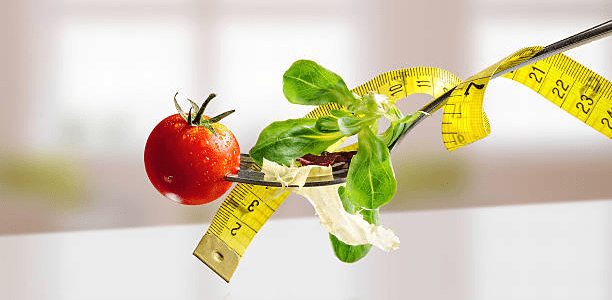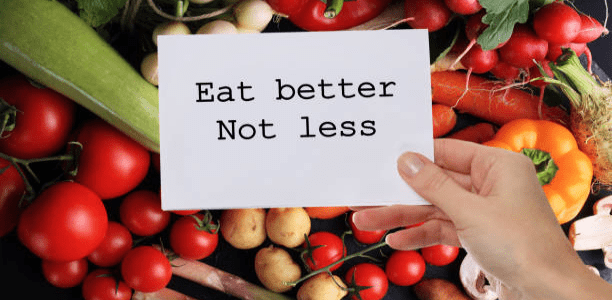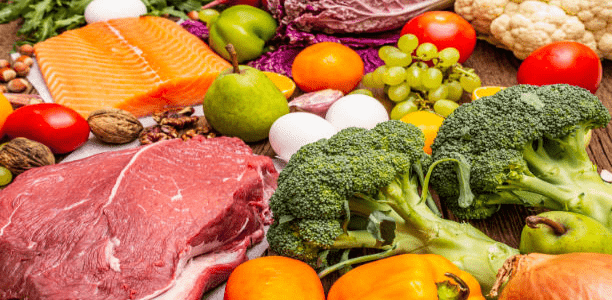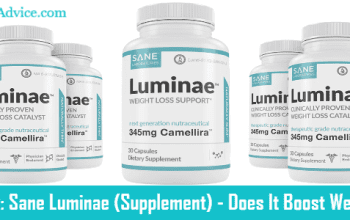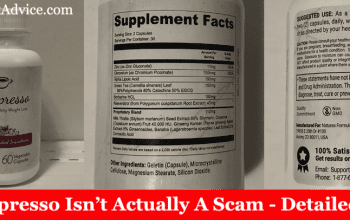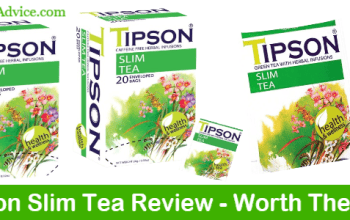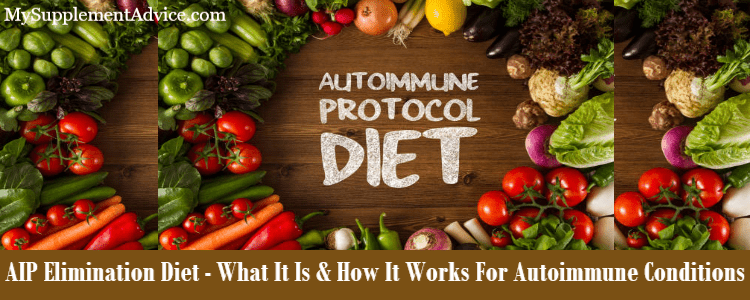
Let's now talk about the AIP Elimination Diet. What is it?
And how does it work for autoimmune conditions?
Well, I'm going to explain you how this diet promotes weight loss:
- how exactly it burns fat
- the research and studies behind it
- what it takes to follow it
If you're considering giving this diet a try, you should know what expects you.
Note: This article includes references and studies related to AIP Elimination Diet.
AIP Elimination Diet (In A Nutshell)
Firstly – AIP stands for Autoimmune Protocol.
It's a type of dietary approach that aims to benefit people with autoimmune conditions.
So what are the main purposes of this diet? Well, according to its claims:
- emphasizes nutrients intake
- promotes gut healing
- identifies and remove trigger foods
- reduces body inflammation
- decreases common autoimmune symptoms
- boosts the immune system
Again, it focuses on improving autoimmune conditions.
But its success obviously depends from case to case.
Autoimmune issues are very different from person to person, so a diet can't be an one for all solution.
For this reason – consulting a healthcare professional before starting the AIP diet is very important.
Now – there are 3 major steps in this dietary approach:
- First, you need to eliminate certain types of foods.
- Second, you reintroduce them one at a time
- This stage's goal is to identify the food triggers.
- Lastly – you maintain eating foods that don't flare up the symptoms and inflammation.
However, keep in mind that there are many risks when trying this diet.
That's because of its several restrictions.
If you want to find a diet specifically for your autoimmune diseases, AIP is surely worth the shot.
Just remember that it will most likely not make miracles.
To be exact – food sensitivities, triggers and symptoms differ from one person to another.
This diet may help a person tremendously, but it can also be totally useless for another one.
So you can say it's all a matter of luck…
Just make sure to be mentally, financially and physically prepared before trying it.
What Is AIP Elimination Diet?
Firstly – the meaning of “AIP” in “AIP Elimination Diet” is Autoimmune Protocol [1].
So it already gives you an idea as to what it's designed for.
To clarify even more, here are the important points you need to know about it:
- it's a dietary protocol designed for individuals with autoimmune conditions
- the diet plan involves identifying and eliminating foods that contribute to symptoms
- removing inflammatory foods is also part of the diet plan
The goal of the AIP Elimination Diet is to reduce the inflammation in the body.
Most importantly, it aims to help gut healing and reduce the symptoms of autoimmune diseases [2].
To give you an idea, here are the common autoimmune diseases that may benefit from the AIP diet [3]:
- Inflammatory Bowel Syndrome (IBS)
- Chron's Disease (CD)
- Ulcerative Colitis (UC)
- Rheumatoid Arthritis
- Hashimoto's Thyroiditis
- Multiple Sclerosis
- Psoriasis
- Autoimmune Hepatitis
Given these problems, the AIP diet should be followed under the supervision of healthcare professionals.
In this way, you can avoid worsening symptoms or flare-ups.
And obviously, you should never stop your prescribed treatment and replace it with this diet.
How AIP Diet Works
In AIP Elimination Diet, consulting a doctor is crucial.
Like I said, diagnosed autoimmune conditions are quite serious.
Anyway, how does AIP Elimination Diet works?
Well – there are 3 major stages in this diet [4]:
- Elimination Phase
- Reintroduction Phase
- Maintenance Phase
Let me explain in detail what each phase is about.
1. Elimination Phase
The Elimination Phase is pretty simple – it's all about elimination:
- you have to remove certain types of foods from your diet
- usually, this phase lasts for at least 30 days [5]
- the goal of this phase is to reduces your symptoms and improve your current condition
Also – you should focus more on nutrient-dense foods while in this phase.
In addition, the duration of this phase will depend on your health sensitivities.
It's quite obvious – the faster you feel better, the less it would last.
2. Reintroduction Phase
The next step in the AIP Diet is the Reintroduction Phase:
- you begin to reintroduce the removed foods one by one
- for each food, you need to observe any changes in your body for a certain number of days
- if you experience worsening symptoms, that food is most likely a trigger
- so it's recommended to eliminate that food from your diet in the long run
- meanwhile, if you don't have any flare ups of symptoms, you can continue to eat that specific food
This phase helps you identify the triggers for your autoimmune condition's main symptoms.
In this way, you can see which food is good or bad for your health.
3. Maintenance Phase
Lastly – here are the details about the Maintenance Phase:
- requires maintaining a diet free from your food triggers
- its target is incorporating nutrient-dense foods to support your overall health
You can also keep a food diary to monitor your symptoms, if there are any changes.
Overall, this part of the diet plan can give you a better knowledge of what foods you should eat.
In the long run, you will have an idea about the foods you need to stay away from.
AIP Diet & Research
Now – the AIP Elimination Diet is an extension of the Paleolithic Diet [6].
However, the only difference is that AIP is stricter in terms of implementation.
With that being said, let's talk about the health conditions that AIP improved:
- symptoms and inflammation in Inflammatory Bowel Disease (IBD) [7]
- disease activity and quality of life in patients with IBD
- digestion in patients with Ulcerative Colitis (UC) and Crohn's Disease (CD) [8]
- immune functions of people with Hashimoto's thyroiditis [9]
- psoriasis, multiple sclerosis and rheumatoid arthritis [10] [11] [12]
- liver function and inflammation from autoimmune hepatitis [13]
Again – all of the points above are backed by clinical studies.
this means that AIP is somehow being studied as a type of dietary approach.
So far, it's a promising dietary intervention for people with autoimmune diseases.
But these studies are still limited and further understanding is needed for its long-term effects.
Given the studies above, this diet seems to be effective in a lot of cases (as of now).
AIP Diet's Benefits
Again – AIP is designed for people with autoimmune conditions.
So here are the benefits of following this diet correctly [14]:
- addresses some nutrient deficiencies
- enhances the absorption of several nutrients
- improves Ulcerative Colitis (UC) and Crohn's Disease (CD)
- decreases inflammation related to IBD
- supports gut health and the growth of beneficial gut bacteria
- reduces symptoms like gas, bloating and constipation
- boosts energy levels and promotes better skin health
- decreases symptoms like fatigue, joint pain and skin rashes
- improves food sensitivities by identifying inflammatory foods
- supports better immune functions
- lowers the risks of infections and illnesses
As you can see, AIP mainly targets problems and imbalances in the gut.
So once your gut health is in an optimal condition, inflammation should decrease all over your body.
This would leads to fewer (or no) symptoms and better overall health outcomes.
AIP Diet's Downsides
Just like any diet, AIP comes with several disadvantages.
So let me give you the top downsides of this type of restrictive diet:
- different nutrient deficiencies due to food restrictions [15]
- emotional stress because of significant changes in eating habits [16]
- feeling of isolation (since you cannot eat what your friends or family eat)
- a higher cost because it requires specialty foods, supplements and professional fees
- weight fluctuations or yo-yo dieting [17]
- limited studies and evidence that can prove its effectiveness at the moment
Again – AIP tries to eliminate the food triggers that may cause inflammation and gut irritations.
It begins by removing a pretty high number of foods (right from the start).
However, some people might not be able to adjust to sudden changes in diet.
So that could be one of the major downsides of this diet.
Overall, AIP comes with some potential risks.
As I already said above, so it shouldn't be followed without a doctor's consent
Also – even if you do consult a doctor, it may still not be suitable for your health condition.
What You Can Eat In AIP Diet
Now, it was already mentioned that you should eliminate some types of food at the start of this diet.
During the initial phase, you will still be allowed to consume several foods [18] [19] [20]:
- non-starchy vegetables (leafy, broccoli, cauliflower, carrots, beets and sweet potatoes)
- fresh fruits with a low glycemic index (berries, apples, pears and citrus)
- poultry and meat (grass-fed beef, organic meats and pastured poultry)
- wild-caught seafood (tuna, salmon and shellfish)
- healthy fats (avocado oil, coconut oil, ghee or olive oil)
- fermented foods that are rich in probiotics (kombucha, kimchi and sauerkraut)
- spices and herbs (such as garlic, ginger, turmeric, cumin, coriander and more)
As you can see, these foods are nutrient-dense, fresh, rich in fiber and not processed.
Although the choices are still varied, some of them are hard to find, due to specific requirements.
Also, here are other additional details you need to know about the foods you can eat in the AIP diet:
- the list of allowed foods is individualized
- sea vegetables might or might not be part of the diet
- some are not allowed to eat fruits, while others are
With that being said, professional advice is highly needed.
Again – the diet plan is different from one person to another.
So it's not recommended to experiment on your own.
Foods To Eliminate In AIP Diet
Now – you already know about the general foods allowed in the AIP diet.
So it's time to look at the foods that are usually eliminated [21] [22] [23]:
- grains (including oats, rice, barley and wheat)
- legumes (peanuts, beans and lentils)
- nightshade vegetables (like peppers, potatoes, eggplants and tomatoes)
- all dairy products (yogurt, milk and cheese)
- eggs (sometimes they are allowed, depending on the health condition)
- industrial seed oils (such as soybean, canola and vegetable oils)
- processed foods (including refined sugar, artificial sweeteners and high fructose corn syrup)
- all types of alcohol (spirits, wine and beer)
If you notice, the foods above are usually sources of inflammation for most people.
So it's quite understandable why they need to be eliminated in the first phase of the diet.
But again – the AIP approach is not a one-size-fits-all program.
Some might need to add more foods to their list (depending on their health needs) compared to others.
Final Conclusion

It comes with a lot of health benefits (on paper):
- reduces inflammation and flare ups symptoms
- decreases symptoms of autoimmune diseases
- eliminates food triggers
- promotes better gut and overall health
- supports a better diet routine
- increases nutrient-dense food intake
- enhances immune response
Again – there are 3 major phases in this type of diet.
They are called Elimination, Reintroduction and Maintenance.
At first, there are a set of foods that have to be removed from the diet.
Each food will be reintroduced one by one, in order to see if there are symptoms flare-ups.
In this way, you can notice the foods that are safe or dangerous for your condition.
However, take note that there are several downsides of AIP (just like of any type of diet).
Now – this diet approach should not be done alone.
You need to consult a doctor before following it.
That's because it's individualized and it's not the same for all cases.
So depending on your sensitivities, your food list will be different than that of other people.
Overall – the AIP diet is a promising option for people suffering from autoimmune conditions.
Why not give it a try yourself and see what it can do?
References:
1 – https://www.ncbi.nlm.nih.gov/-pmc/articles/-PMC7147823/
2 – https://www.healthspan.co.uk/-advice/-leaky-gut-syndrome-with-an-autoimmune-diet/
3 – https://medlineplus.gov/-ency/article/-000816/
4 – https://www.ntforibd.org/what-is-nutritional-therapy/-auto-immune-protocol-diet/
5 – https://www.autoimmuneinstitute.org/-elimination-diet/
6 – https://www.ncbi.nlm.nih.gov/-pmc/articles/-PMC7147823/
7 – https://www.ncbi.nlm.nih.gov/-pmc/articles/-PMC5647120/
8 – https://pubmed.ncbi.nlm.nih.gov/-31832627/
9 – https://www.ncbi.nlm.nih.gov/-pmc/articles/-PMC6592837/
10 – https://www.dietvsdisease.org/-psoriasis-treatment-diet/
11 – https://www.ncbi.nlm.nih.gov/=pmc/articles/-PMC8955724/
12 – https://www.arthritis.org/health-wellness/anti-inflammatory/-arthritis-symptoms/
13 – https://www.ncbi.nlm.nih.gov/-pmc/articles/-PMC5750534/
14 – https://www.ncbi.nlm.nih.gov/-pmc/articles/-PMC5647120/
15 – https://www.hsph.harvard.edu/nutritionsource/healthy-weight/-paleo-diet/
16 – https://www.hsph.harvard.edu/nutritionsource/-stress-and-health/
17 – https://www.diabetesfoodhub.org/articles/-dangers-of-yo-yo-dieting/
18 – https://uwaterloo.ca/organizational-human-development/sites/-paleodiet/
19 – https://www.hsph.harvard.edu/-nutritionsource/-anti-inflammatory-diet/
20 – https://www.arthritis.org/health-wellness/nutrition/anti-inflammatory-diet/
21 – https://www.houstonmethodist.org/-types-of-foods-that-cause-inflammation/
22 – https://www.ncbi.nlm.nih.gov/-pmc/articles/-PMC2868080/
23 – https://www.cancer.gov/about-cancer/risk/diet/-artificial-sweeteners/




